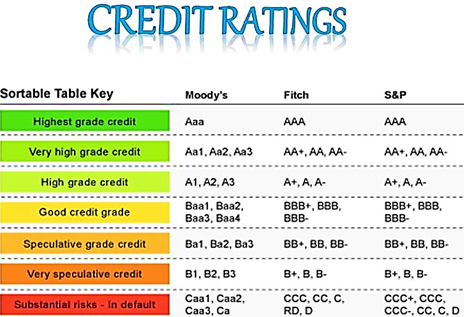Ratings Agency
- 11 Feb 2022
Recently, Finance Secretary accused ratings agencies of “double standards” when assessing emerging markets and developing economies.
- Fitch, a rating agency, had stated that higher deficits and continued lack of clarity on medium-term consolidation plans in the recent Union Budget was its rationale for projecting of a downward trajectory in the country’s debt/GDP.
- Another agency, Moody’s, said the Union Budget was growth-oriented, credit positive for many issuers but the budgetary provisions posed fiscal challenges.
About Rating Agency
- Ratings agencies assess the credit worthiness or potential of an equity, debt or country. Their reports are read by investors to make an informed decision on whether or not to invest in a particular country or companies in that geography.
- They assess if a country, equity or debt is financially stable and whether it at a low/high default risk.
- In simpler terms, these reports help investors gauge if they would get a return on their investment.
- The agencies periodically re-evaluate a previously assigned ratings after new developments (example, Coronavirus pandemic or a geography-specific climate change), geo-political events or a significant economic announcement by the concerned entity.
- Their reports are sold and published in financial and daily newspapers.
Grading Pattern
The three prominent ratings agencies, viz., Standard & Poor’s, Moody’s and Fitch subscribe to largely similar grading patterns.
- Standard & Poor’s accord their highest grade, that is, AAA, to countries, equity or debt with the exceedingly high capacity to meet their financial commitments. Its lowest grade is ‘D’, accorded to entities with high probability of payment default or breach of an imputed promise.
- This is particularly accorded in case the concerned entity has filed for bankruptcy.
- Its grading slab includes letters A, B and C with an addition a single or double letter denoting a higher grade.
- Moody’s separates ratings into short and long-term definitions.
- The former involves obligations maturing in thirteen months or less whereas the latter involves obligations maturing in eleven months or more. Its longer-term grading ranges from Aaa to C, with Aaa being the highest.
- The succession pattern is similar to S&P. The short-term ratings scale ranges from P-1 to NP, with P-1 being the highest.
- Fitch, too, rates from AAA to D, with D being the lowest. It follows the same succession scheme as Moody’s and Fitch.

Impact of Ratings
Positive
- At the country level, investors rely on the ratings given by the credit rating agencies to make investment decisions.
- Many countries sell their securities in the international market, and a good credit rating can help them access high-value investors.
- A favorable rating may also attract other forms of investments like foreign direct investments to a country.
Negative
- Lowered rating of a country can potentially cause panic selling or offloading of investment by a foreign investor.
Criticism
- Popular ratings agencies publicly reveal their methodology, which is based on macroeconomic data publicly made available by a country, to lend credibility to their inferences.
- However, credit rating agencies were subjected to severe criticism for allegedly spurring the financial crisis in the United States, which began in 2017.
- Rating agencies were also criticized for possible conflict of interest between them and issuers of securities.




